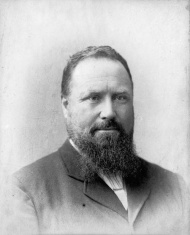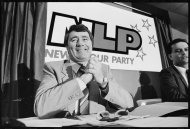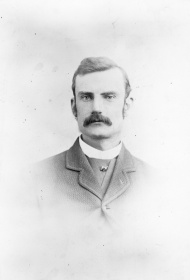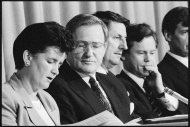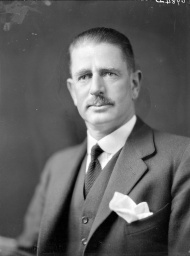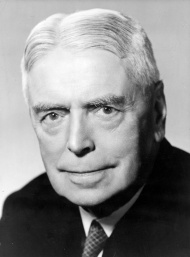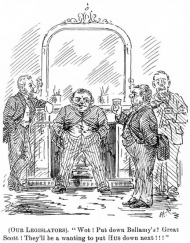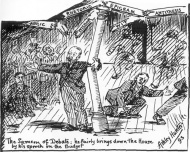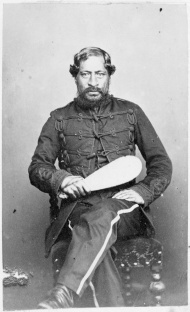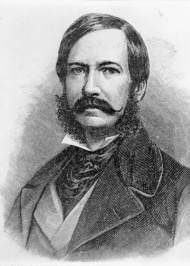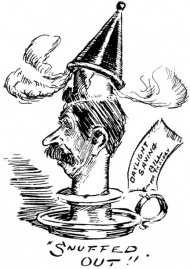Events In History
-
 29 May 1947Mabel Howard becomes first female Cabinet minister
29 May 1947Mabel Howard becomes first female Cabinet ministerWhen Howard was appointed minister of health and minister in charge of child welfare, she became the first woman to serve as a Cabinet minister in a Commonwealth country. Read more...
-
 13 September 1933NZ's first woman MP elected
13 September 1933NZ's first woman MP electedThe Labour Party's Elizabeth McCombs became the first woman Member of Parliament, winning a by-election in the Lyttelton seat caused by the death of her husband, James McCombs. Read more...
-
 10 June 1906Death of Richard Seddon
10 June 1906Death of Richard SeddonKnown as 'King Dick', Seddon had dominated New Zealand politics since the early 1890s. His Liberal government established the tradition of state-supported welfare in this country. Read more...
Articles
Parliament's people

\Today there are 120 MPs in New Zealand's Parliament, which is a far cry from the 37 who met for the first time in Auckland in 1854.
-
Page 2 – Women MPs
For much of its first century, Parliament was a bastion of male culture. Nowadays women make up 30% of MPs.
-
Page 3 – Māori MPs
Leaders of Māori society have represented their people in the House, including Maui Pomare, James Carroll, Matiu Rata and, most famously, Apirana Ngata.
-
Page 4 – Pay and travel
One of the early issues parliamentarians discussed was pay for MPs, and one of the biggest difficulties MPs faced in the early years was travelling to Parliament.
-
Page 5 – Social life
In the early years, Parliament was a little like a superior gentlemen's club.
-
Page 9 – Biographies
Some of the key figures in New Zealand parliamentary history
-
Page 10 – Further information
This web feature was written by John E. Martin and produced by the NZHistory.net.nz team.LinksParliament (Te Ara)BooksMartin, John E.
The House of Representatives

New Zealand's Parliament dates back to 1854, just 14 years after the signing of the Treaty of Waitangi and the beginning of the European settlement of the country. For most of its history as a nation state, New Zealand has had some form of elected government.
-
Page 2 – Quick history
New Zealand's Parliament has been making laws, scrutinising the government and representing New Zealanders for over 150 years.
-
Page 4 – Doing business
The operation of Parliament has changed over time as its workload has grown and new systems such as MMP have been implemented.
-
Page 5 – First sitting, 1854
It started with a bang – 21 in fact, fired from the guns at Auckland's Fort Britomart. As soon as the smoke had cleared, New Zealand's first Parliament was under way.
-
Page 6 – The Opposition
The Opposition uses a variety of tactics to hold the government to account.
-
Page 7 – The Speaker
The Speaker, who is elected by MPs, has a key role in representing the House to the Crown and in presiding over the House.
Lyttelton-Wellington ferries

For more than 80 years the overnight Lyttelton ferry was a vital link in the country's transport network.
- Page 4 - Politicians and ferriesPoliticians used the ferries to travel between their electorates and Wellington, so they scrutinised the Union Steam Ship Company's management of the
Parliament's culture and traditions

Explore Parliament's rich history and its colourful culture and traditions.
- Page 5 - Bad languageIn the cut and thrust of Parliament's Debating Chamber, there are rules about what can and cannot be said.
Parliament Buildings

Parliament buildings have been modified, destroyed by fire, half-built and restored; the parliamentary places and spaces have formed an important part of New Zealand's history.
- Page 6 - A workplaceMany people call Parliament their workplace, but for MPs and others, the parliamentary complex has not always been the ideal place to spend long
The road to MMP

In 1993 New Zealanders voted to replace their traditional first past the post (FPP) voting system with mixed member proportional representation (MMP). Eighteen years on, as Kiwis voted in a new electoral referendum, we explore how and why that dramatic reform came about.
- Page 5 - 1996 and beyond - the road to MMPThe three years following the 1993 referendum, before the first MMP election in 1996, were ones of transition and uncertainty.
Biographies
-
 Carroll, James
Carroll, James
Cabinet Minister and twice acting Prime Minister, James Carroll’s main aim in Parliament was to empower Maori and secure a role for them in the economic life of the country.
Read more... -
 McCombs, Elizabeth Reid
McCombs, Elizabeth Reid
Forty years after women in New Zealand received the right to vote, Elizabeth McCombs became the first female Member of Parliament.
Read more... -
 Ngāpua, Hōne Heke
Ngāpua, Hōne Heke
Hōne Heke Ngāpua was elected to Parliament in 1893 and represented the people of Northern Māori almost continuously until his death in 1909.
Read more... -
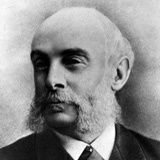 Bell, Francis Dillon
Bell, Francis Dillon
Politician Francis Bell staunchly supported the Waitara purchase in 1860, which led to the Taranaki war. In 1862 he became Minister of Native Affairs. His administration has been described as 'not particularly efficient or vigorous', although he did support the 1862 forerunner of the Native Land Court
Read more... -
 Coates, Joseph Gordon
Coates, Joseph Gordon
Gordon Coates seemed unbeatable. Tall and handsome, this affable war hero embodied modernity – he was the ‘jazz premier’. In 1925’s presidential-style election voters elected to take their ‘Coats off with Coates’.
Read more... -
 Fraser, Peter
Fraser, Peter
Peter Fraser, New Zealand’s wartime PM, led the nation for nine years. Respected rather than loved like Savage, many experts rate him our finest PM.
Read more... -
 Kirk, Norman Eric
Kirk, Norman Eric
In 1972 Norman Kirk broke National’s 12-year-long grip on the Treasury benches and became Labour’s first New Zealand-born PM.
Read more... -
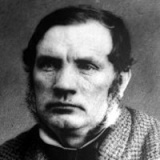 McLean, Donald
McLean, Donald
Politician and land purchase agent Donald McLean's approach to race relations was based on the belief that European dominance was inevitable and desirable, and that the best chance for Māori was complete assimilation.
Read more... -
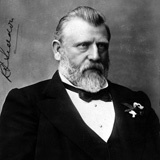 Seddon, Richard John
Seddon, Richard John
Richard Seddon’s nickname, ‘King Dick’, says it all. Our longest-serving and most famous leader not only led the government, he was it, many argued. For 13 years he completely dominated politics.
Read more... -
 Colenso, William
Colenso, William
Colenso arrived at the Bay of Islands as the Church Mission printer in December 1834. His achievements include printing the New Testamont in Māori and the Māori version of the Treaty of Waitangi.
Read more... -
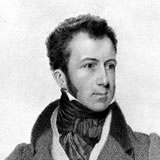 Wakefield, Edward Gibbon
Wakefield, Edward Gibbon
A clever theorist of mercurial character, Edward Gibbon Wakefield (1796-1862) masterminded the large-scale British settlement of New Zealand.
Read more... -
 Lange, David Russell
Lange, David Russell
Seven years and one stomach-stapling operation after entering Parliament in 1977, David Lange became PM at the age of 41.
Read more... -
 Lee, Alfred Alexander
Lee, Alfred Alexander
A charismatic ex-soldier, orator and propagandist, John A. Lee was a dynamic figure in the Labour Party from the 1920s until 1940, when he was expelled for attacking the leadership of M.J. Savage.
Read more... -
 Holland, Sidney George
Holland, Sidney George
Holland became PM in 1949. A year later he abolished the Legislative Council, and in 1951, after winning the Waterfront Dispute, he increased his majority in a snap election.
Read more... -
 Featherston, Isaac Earl
Featherston, Isaac Earl
A stalwart of Wellington political life, Featherston served as provincial Superintendent and later served as a member of the House of Representatives, colonial secretary and minister without portfolio.
Read more... -
 Rowling, Wallace Edward
Rowling, Wallace Edward
Norman Kirk’s death in office brought Bill Rowling to the prime ministership unexpectedly in August 1974. A member of an old Tasman Bay farming family, and a teacher by training, he had been finance minister since 1972.
Read more... -
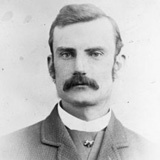 Reeves, William Pember
Reeves, William Pember
The series of labour acts for which William Pember Reeves was responsible gave New Zealand the most extensive system of labour regulations in the world at the turn of the twentieth century.
Read more... -
 Richmond, Christopher William
Richmond, Christopher William
William Richmond was a lawyer, Minister in Edward Stafford’s Parliament, and judge of the Supreme Court of New Zealand.
Read more... -
 Taylor, Thomas Edward
Taylor, Thomas Edward
Tommy Taylor was one of the most colourful figures in the political life of his day. He spent his life campaigning for the prohibition of alcohol.
Read more... -
 Allen, James
Allen, James
As Minister of Defence from 1912 until 1920, James Allen was responsible for the organisation of New Zealand’s military forces during the First World War.
Read more... -
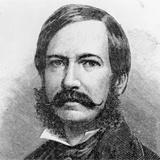 Wakefield, Edward Jerningham
Wakefield, Edward Jerningham
As the only son of New Zealand Company director Edward Gibbon Wakefield, Edward Jerningham Wakefield's life was inevitably bound up in his father's colonial and political ventures.
Read more...
Related keywords
- paddy webb
- conscientious objection
- conscription
- james allen
- WW1
- john mckenzie
- liberal party
- 1980s
- william pember reeves
- edward jerningham wakefield
- new zealand company
- canterbury association
- richard seddon
- funerals
- premiers
- prohibition
- government
- tommy taylor
- justice system
- law
- lawyer
- william richmond
- parliament
- iriaka ratana
- suffrage campaign
- Maori MPs
- labour party
- women in politics
- parliament buildings
- the speaker
- dunedin
- reform party
- navy
- international relations
- transport
- shipping
- ferries
- bellamys
- mabel howard
- language
- christianity
- MMP
- voting
- wellington city
- isaac featherston
- doctors
- women
- elizabeth mccombs
- famous firsts
- lyttelton
- wallace rowling
- prime ministers
- leisure
- alcohol
- clothing
- elections
- sidney holland
- waterfront dispute
- national party
- protest
- writing
- john a lee
- great depression
- francis dillon bell
- kaipara
- gordon coates
- maori land
- auckland city
- ngati kahungunu
- james carroll
- waitara
- donald mclean
- memorials
- seddonville
- harry holland
- legislative council
- WCTU
- treaty of waitangi
- ngapuhi
- land claims
- kotahitanga
- hone heke ngapua
- maori leaders
- te reo māori
- jim bolger
- buller
- poetry
- walter nash
- henare kaihau
- ngati te ata
- tahupotiki wiremu ratana
- maori war effort
- cartoon
- william cargill
- architecture
- ashburton
- 1920s
- religion
- william hall-jones
- joseph ward
- mahuta tawhiao potatau te wherowhero
- hori taiaroa
- 1970s
- printing
- william colenso
- missionaries
- declaration of independence
- governor-general
- paul reeves
- roading
- peter fraser
- WW2
- trade unions
- united nations
- temperance
- robert stout
- adolescents
- teenagers
- karori
- norman kirk
- springboks
- nuclear free
- waitangi tribunal
- waitangi day
- national identity
- railways
- great white fleet
- kumara
- law reform
- seddon
- edward gibbon wakefield
- time
- daylight saving
- david lange
- alfred domett
- press
- newspapers
- hunterville
- merchant navy
- conservation
- apirana ngata
- maui pomare
- matiu rata
- michael joseph savage
- social policy
-
Main image: Paddy Webb's resistance to conscription
Member of Parliament Patrick Charles (Paddy) Webb (1884–1950) was the most prominent casualty of the government’s desire to quash anti-conscription sentiment after the passing of the Military Service Act in 1916.



